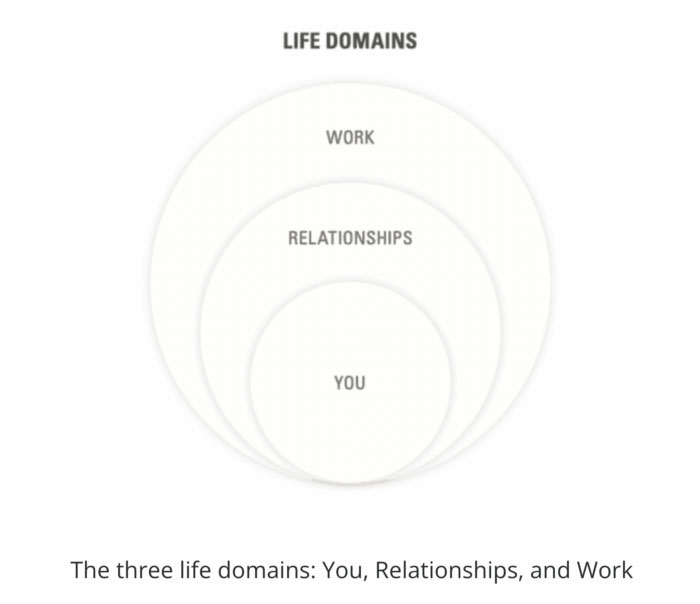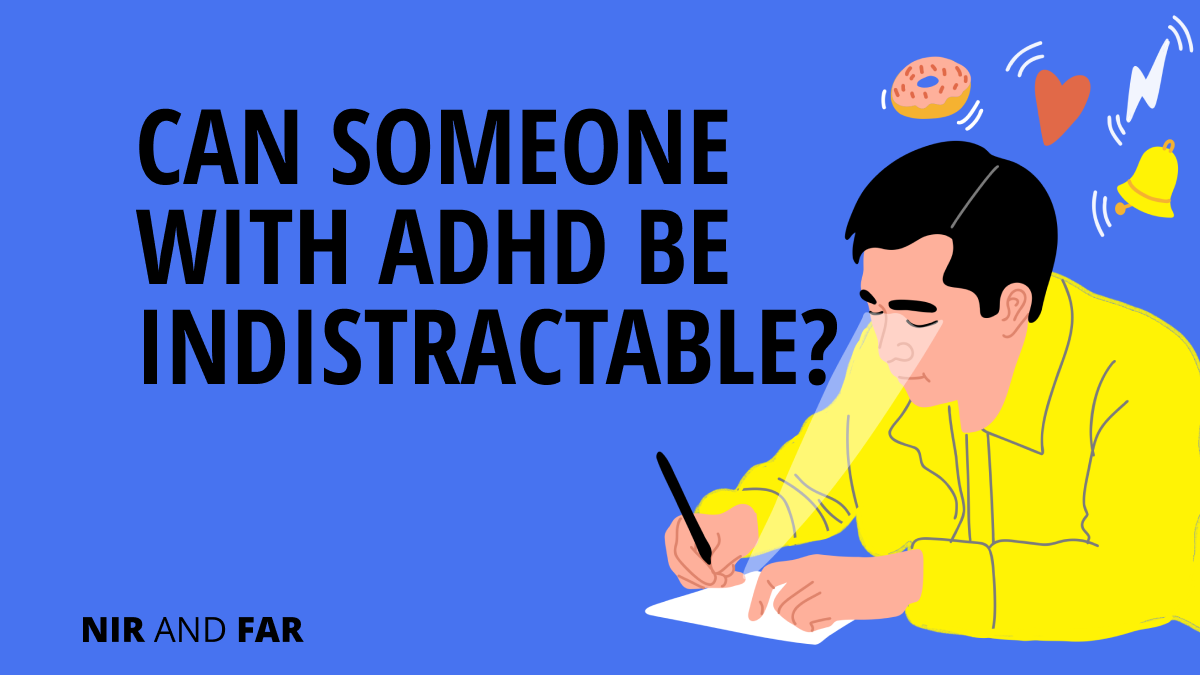Does my book Indistractable: How to Control Your Attention and Choose Your Life work for the ADHD brain? It’s a question I’ve been getting a lot lately.
Though I didn’t specifically write the book for people with ADHD, I wanted to get an honest opinion from an expert. I reached out to Caitlin O’Brient Bauer, who was diagnosed with ADHD at age 8 and is now a certified ADHD coach.
In our recent podcast interview, Caitlin explained how the Indistractable model suits the ADHD brain, shared how she personally uses Indistractable and discussed how others with ADHD can use the techniques discussed in the book.
Below are three takeaways from our conversation:
Define Yourself By Your Values, Not Your Diagnosis
Those newly diagnosed with ADHD often feel broken—unable to function like a “normal” person, according to Caitlin. It’s easy to get caught in the “deficit” and “disorder” of ADHD, but neither of those words accurately captures the condition.
Being indistractable doesn’t mean you never get distracted. It means you strive to do what you say you will do and you know why you got distracted so you can do something about it next time.
She encourages people to understand that ADHD is a neurological condition, which starts with a difference in brain wiring: “The challenges of ADHD are very real, and it’s important to acknowledge them. But don’t let the diagnosis or its limitations define you, because that’s not who you are. Define yourself by your values.”
As I write in Indistractable, core values are the attributes of the person we want to be, such as being a loyal friend or a dedicated parent. It’s important to identify our values because each one is a guiding star that we use to navigate our life choices.
However, pinpointing values can be challenging for those with ADHD.
“We often don’t know what it is that we value,” says Caitlin. “Additionally, values can be a hotbed of shoulds, and should is a trigger word for me and other ADHDers. We have to be careful that we’re not trying to prove ourselves to someone, because we’ve been trying to prove ourselves for the entirety of our lives.”
Which is why she found Indistractable’s process of categorizing values into three life domains so helpful.
The three life domains—you, your work, and your relationships—outline where you spend your time. They give you a framework to think about how you plan your days so that you can become an authentic reflection of the person you want to be.

To further help you identify your values, I created this list of life values, which also guides you in pinpointing actions you can take to live up to each value.
Timeboxing: Finding Structure with Room to Play
When people with ADHD are confronted with all the things they need to do, they tend to become overwhelmed and shut down.
“For the ADHD brain, everything is equally important,” says Caitlin. “We don’t have a filter. So it’s crucial for us to identify criteria and create some guidelines to help us make decisions around how to spend our time or what we want to do—which ties back to knowing your values. But values can only take you so far.”
That’s why a never-ending to-do list would likely freeze someone with ADHD. People with ADHD need structure, but not too much structure.
Caitlin was surprised by the effectiveness of timeboxing, a time management technique in which you reserve periods of time to work on distinct tasks each day—a key part of the Indistractable model.
“ADHDers don’t like being told what to do—we are often resistant to structure, but if we don’t have that structure in place, we flail,” Caitlin tells me. “If you’re not reserving your time, people can take it if you let them. A person with ADHD also needs some freedom to play and experiment. What you said about approaching the exercise as a curious scientist helped me to see that timeboxing wasn’t as restrictive as it seems. Once I gave myself permission (and plenty of time) to play, it took the pressure off, and I no longer felt shut down.”
To create a timeboxed calendar, we must turn our values into time.
Every action that helps you live up to your values should be scheduled into your agenda. (Use this free schedule maker template to get started!)
A person who values being healthy, for example, could schedule two hours every Sunday afternoon to meal prep nutritious lunches for the week.
For Caitlin, the idea of turning values into time helped her bypass the overwhelm of creating a detailed schedule for herself.
“Reading Indistractable was the first time I had ever heard anyone talk about time management in this way, and my head exploded,” she says. “That shift for me was so powerful. Suddenly, instead of getting stuck in the nitty-gritty—looking at the calendar and shutting down because I didn’t know where to start—there were some clear instructions to help me break it down.”
When Caitlin first started timeboxing, she kept it simple, only scheduling blocks for sleep, personal activities, and work. Slowly, she experimented with adding other tasks like fun, exercise, and “percolation time,” or time for mind wandering, to her calendar. Today, three years since she started using the technique, she has a timeboxed calendar with almost zero whitespaces.
Accountability: Learn What Activates Your Brain
When it comes to focusing, people with ADHD don’t have the same types of motivations as neurotypical people, according to Caitlin. The ADHD brain is primarily fueled by interest. What’s more, motivation looks different for every ADHDer.
That’s why it’s important to be a scientist, not a drill sergeant, and experiment with accountability techniques to find those that work for you.
Indistractable discusses the power of using precommitments to reduce the likelihood of distraction. They help us stick with the decisions we’ve made in advance. Two types of precommitments are effort pacts and price pacts.
On one occasion, to motivate herself to exercise, Caitlin made a price pact by saying she would burn a $20 bill if she didn’t exercise…and she ended up burning it. As she says, the price pact just wasn’t “shiny” enough for her ADHD brain.
But she realized that having someone to be accountable to was a great way to get her to commit. Indeed, making pacts with other people is one of the best ways to stay committed and be Indistractable.
That’s why Indistractable tools such as Focusmate are so popular among people with ADHD, says Caitlin, adding that she regularly recommends Focusmate to her clients. Alternatively, Caitlin and her colleague used to have a two-hour Zoom standup every week to hold each other accountable to their work.
Indistractable is “very much in line with the things we need to address with ADHD interest-based brain wiring,” according to Caitlin. She added that the structure of the book is very ADHD-friendly, with chapter takeaways and recaps.
I hope that other people with ADHD find Indistractable as helpful as she did.
Related Articles
- Schedule Maker: a Google Sheet to Plan Your Week
- Habit Tracker Template in Google Sheets
- The Ultimate Core Values List: Your Guide to Personal Growth
- Timeboxing: Why It Works and How to Get Started in 2025
- An Illustrated Guide to the 4 Types of Liars
- Hyperbolic Discounting: Why You Make Terrible Life Choices
- Happiness Hack: This One Ritual Made Me Much Happier

